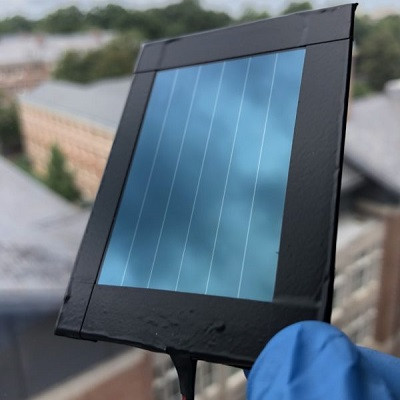
2020-08-12
Visited : 1365
U.S. scientists have found a new ‘de-doping’ process in perovskite solar cells that could cut production costs and produce better devices. They have used this to fabricate a mini-module with 17.8% efficiency.
Perovskite solar cell technology has come a long way in a relatively short time, but there are still plenty of issues that need to be ironed out to support large-scale production.
Scientists at the University of North Carolina (UNC) say that one of these issues is the annealing (heating and slow cooling) process that perovskites undergo. Many fabrication processes take too long, presenting a significant bottleneck in mass production. The UNC scientists estimate that for long annealing times to keep up with the speed at which perovskites films are produced, manufacturers would need a 500-meter-long oven.
The UNC scientists said that cutting this annealing process down to three minutes at 100 C could actually lead to better performance. The group puts this down to a previously unknown de-doping process within the perovskite, which ultimately leads to lower recombination losses and better efficiency.
The group fabricated perovskite (methylammonium lead iodide) devices using a blade-coating process, and compared identical devices that had been annealed for three and 20 minutes, respectively. Both devices initially recorded an open-circuit voltage of 1.14 V, but after 20 days aging in the dark, the three-minute device had increased to 1.20 V, while the 20 minute device had slightly decreased to 1.13 V.
Examining both devices, the group discovered a ‘de-doping’ process was at work in the shorter annealed device, but not in the long one. “The short annealing treatment maintains the stoichiometric composition of perovskite and allows a notable spontaneous de-doping process,” state the researchers. “[This] is absent in perovskite films treated with conventional long annealing.”
They describe the de-doping process in “Reduced Self-Doping of Perovskite Induced by Short Annealing for Efficient Solar Modules,” which was recently published in Joule. Further experimentation suggests similar effects are present in cesium- and formamidinium-based perovskites, as well.
The process was shown to continue in completed devices as well as perovskite films, so the researchers suggest that in the commercial space, manufacturers could take advantage of storage and shipping periods post-production for the modules to reach maximum efficiency, while increasing throughput and eliminating an expensive heating stage in production.
Read the original article on pv magazine.